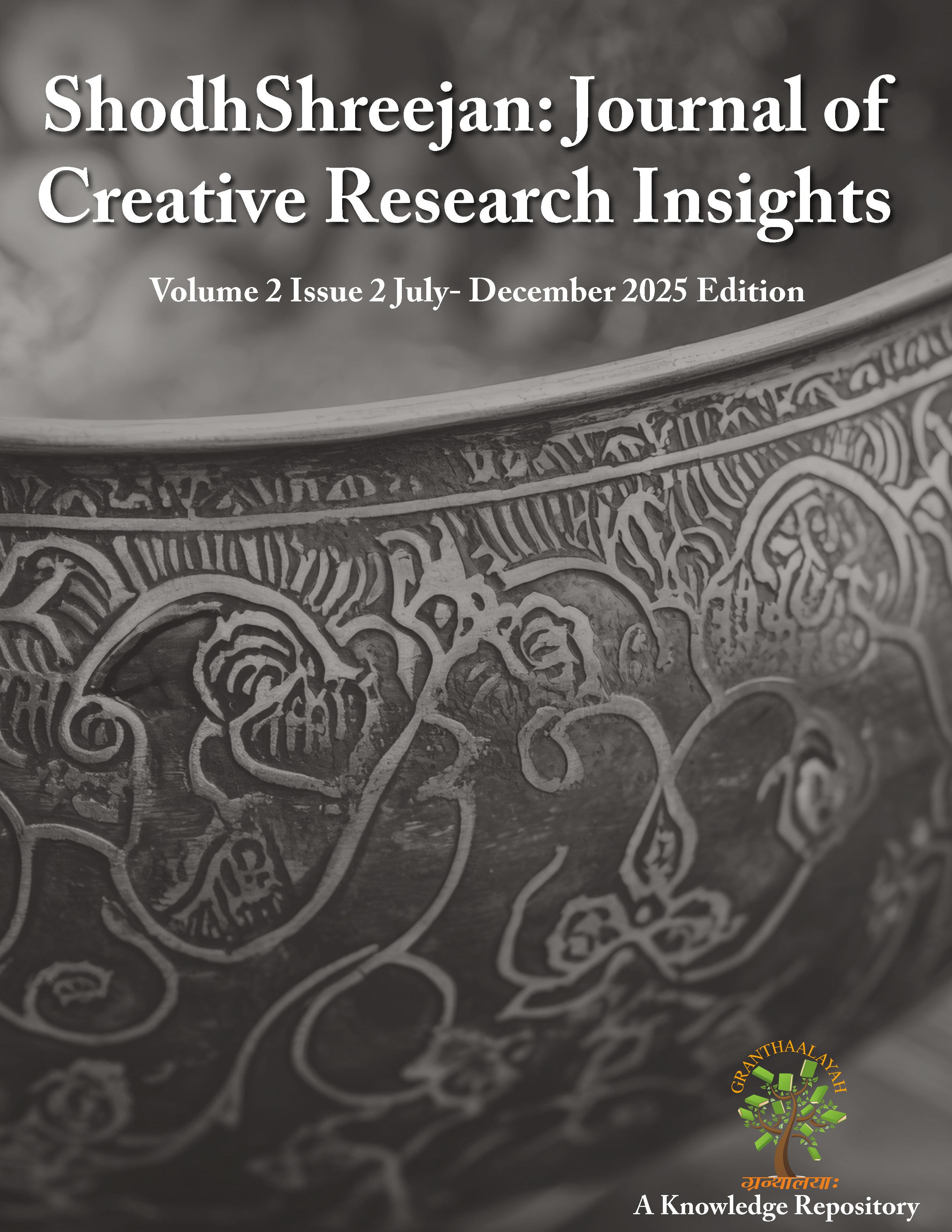RITUAL TO RECOGNITION: MODERN VISUAL LANGUAGE OF RAM SINGH URVETI
DOI:
https://doi.org/10.29121/shodhshreejan.v2.i2.2025.29Keywords:
Indigenous Art, Visual Narrative, Gond Painting, Tribal Modernity, Myth and MemoryAbstract [English]
The entry of tribal visual culture into the world of contemporary art, as exemplified by Ram Singh Urveti, a groundbreaking artist of the current Gond art scene, presents a striking example of the transformation of traditionally community-oriented, ritualistic visual culture into the realm of contemporary art. Drawing on the oral tradition and cosmological narratives of the Gond Pradhan community, Urveti's work reimagines ancestral myths and fables through intricate linework, symbolic animal images, and natural landscapes. The paper will discuss how he shifted his mode of collectively telling stories to being an independent artist, starting with his youthful partnership with Jangarh Singh Shyam, and to his maturity as a renowned artist who is honored globally.
References
An in-Depth Exploration of Bhil Art-Inspired Design in Contemporary Textile Products. (2024). ShodhKosh: Journal of Visual and Performing Arts, pp. –.
Assmann, J. (1995). Collective Memory and Cultural Identity. New German Critique, (65), 125–133. https://doi.org/10.2307/488538
Barthes, R. (1977). Image-music-text (S. Heath, Trans.). Fontana Press.
Bharat Bhavan. (n.d.). Exhibitions and Permanent Collections. Retrieved from
Bhil art: A Critical Literature Review on Tradition, Expression, and Cultural Preservation. (2024, April). Eduphoria: An International Multidisciplinary Magazine.
Elwin, V. (1951). The Tribal Art of Middle India. Oxford University Press.
Enhancing Traditional Craftsmanship: Impact of Training on Mandana, Bhil, and Gond Artisans. (2025). Proceedings IMASEE.
eTribal Tribune. (2025, August 15). Ram Singh Urveti: A Profile of an Artist.
Goetz, H. (1959). The Art and Architecture of India. Oxford University Press.
IGNCA. (n.d.). Tribal and Folk art Archives. Retrieved from
Indira Gandhi National Centre for the Arts. (2025, August 15). Ram Singh Urveti – Gond artists of Madhya Pradesh.
Jain, J. (2010). Living Traditions: Contemporary Folk Art from India. Mapin Publishing.
MAP Academy. (2025, January 25). Ram Singh Urveti. MAP Academy Encyclopedia of Art.
Mitchell, W. J. T. (2005). What Do Pictures Want? The Lives and Loves of Images. University of Chicago Press. https://doi.org/10.7208/chicago/9780226245904.001.0001
Ojas Art. (n.d.). Exhibition Archive and Catalogue: Ram Singh Urveti. Retrieved from
Ojha, S. (2021). The Re-Imagining of Tribal Art in India: A Study of Jangarh Singh Shyam and His Legacy. South Asian Studies, 37(2), 214–229. https://doi.org/10.1080/02666030.2021.1889795
Philadelphia Museum of Art. (2018). Painted Songs and Stories: The Hybrid Art of India's Gond Tribes [Exhibition notes]. Retrieved from
Phillips, R. B., & Thomas, N. (1998). Trading Identities: The Souvenir in Native North American art from the Northeast, 1700–1900. University of Washington Press.
Rani, A. (2019). The Gond Painting of Prominent Artists (An Exploratory Study of Jangarh Singh Shyam, Ram Singh Urveti). Journal of Commerce and Trade, 14(2), 41–47.
Sarmaya Arts Foundation. (n.d.). Ram Singh Urveti: Artist Archive. Retrieved from https://www.sarmaya.in/artist/ram-singh-urveti/
Sethi, A. (Ed.). (2015). The Spirit of Gond: The Art of Jangarh Singh Shyam and His Legacy. Roli Books.
Swaminathan, J. (1987). The Perceiving Fingers: Essays on the Art of Tribal and Folk India. Bharat Bhavan Publication Division.
Thomas, N. (1991). Entangled Objects: Exchange, Material Culture, and Colonialism in the Pacific. Harvard University Press.
Published
Issue
Section
License
Copyright (c) 2025 Yash Sakla, Dr. Suman Pandey

This work is licensed under a Creative Commons Attribution 4.0 International License.
With the licence CC-BY, authors retain the copyright, allowing anyone to download, reuse, re-print, modify, distribute, and/or copy their contribution. The work must be properly attributed to its author.
It is not necessary to ask for further permission from the author or journal board.
This journal provides immediate open access to its content on the principle that making research freely available to the public supports a greater global exchange of knowledge.



















